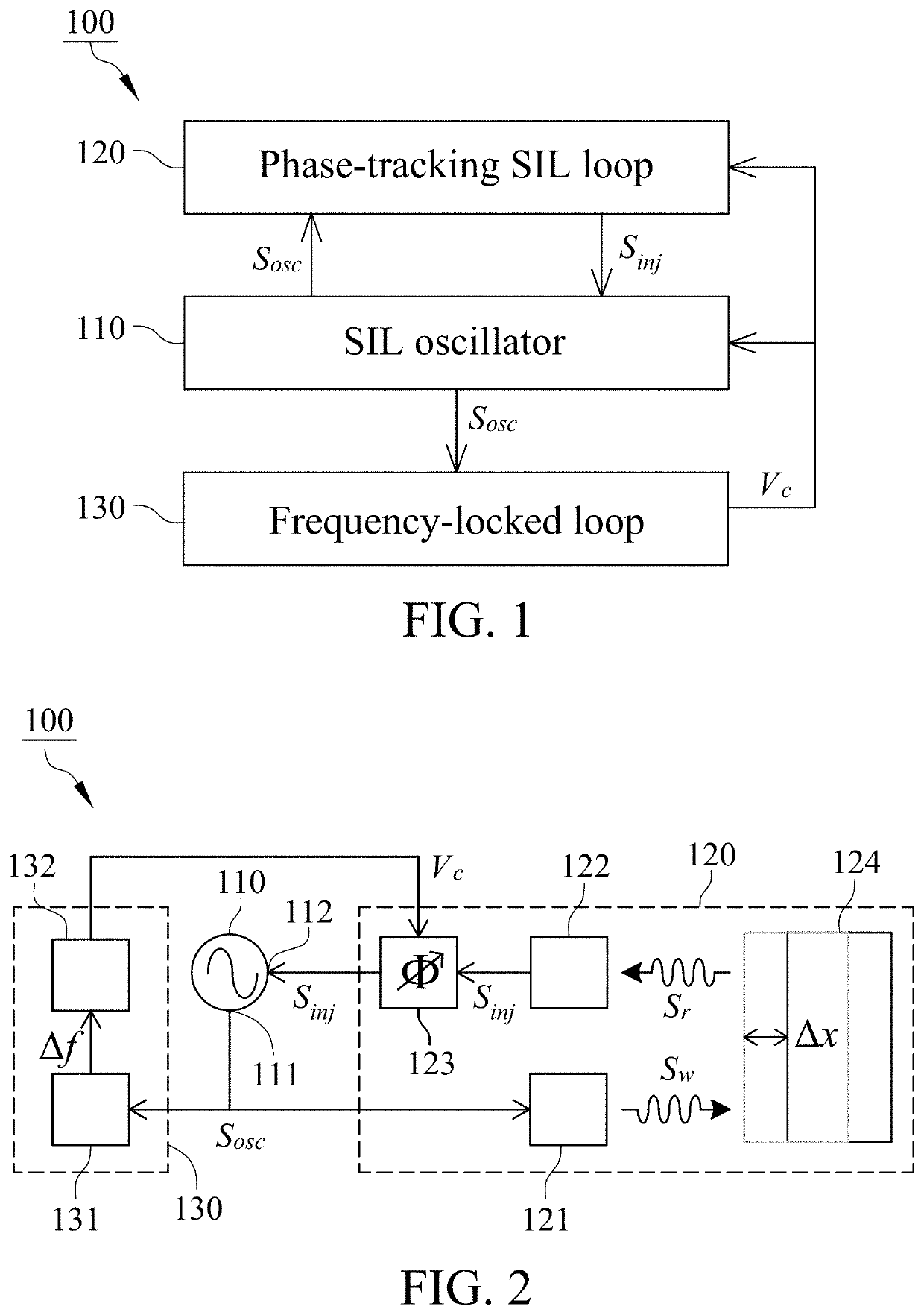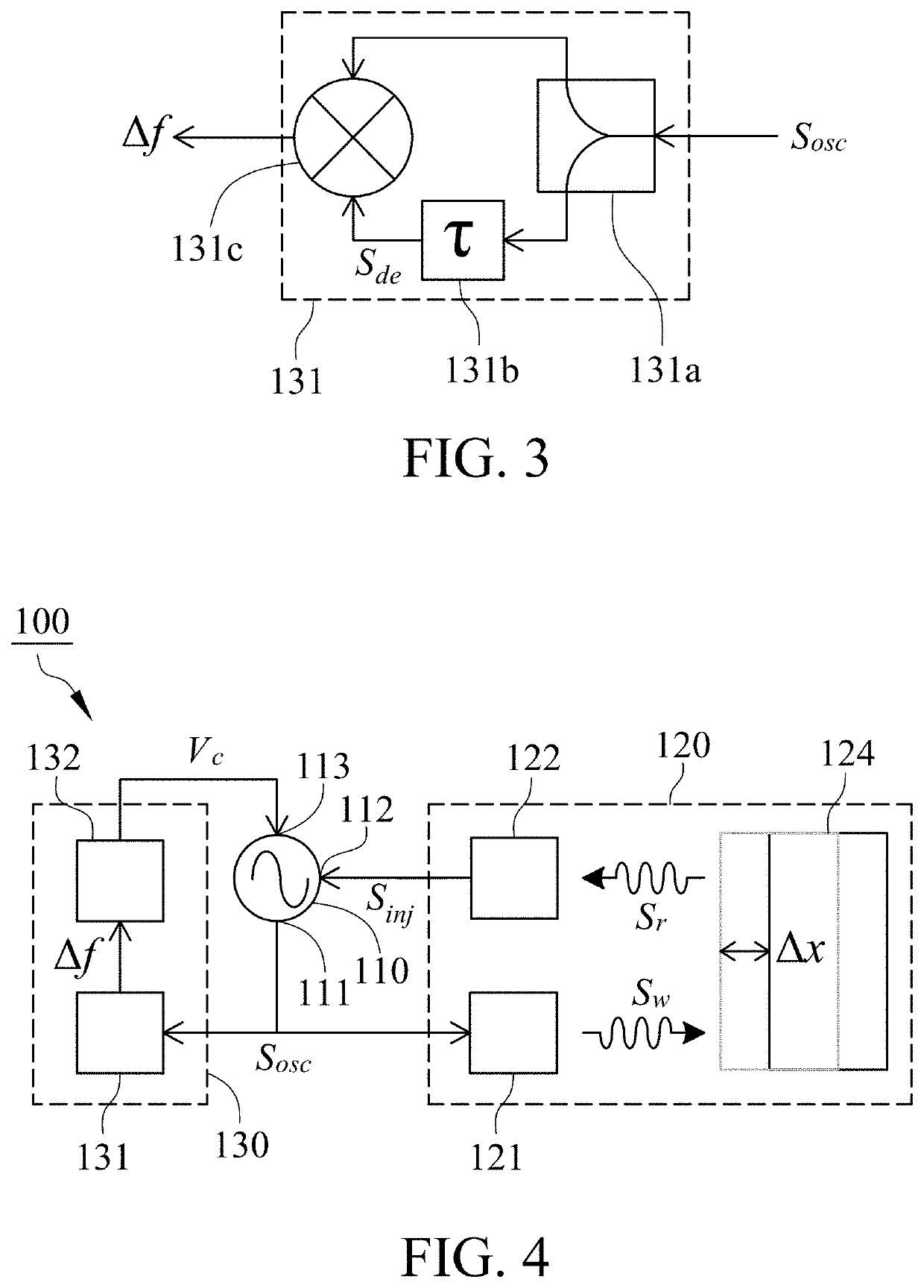Phase-tracking self-injection-locked radar
a self-injection and radar technology, applied in the direction of automatic control, measurement devices, instruments, etc., can solve the problems of difficult tracking of vital signs of moving targets, strong nonlinearity of conventional cw doppler radars for monitoring vital signs, etc., and achieve high linearity and high sensitivity
- Summary
- Abstract
- Description
- Claims
- Application Information
AI Technical Summary
Benefits of technology
Problems solved by technology
Method used
Image
Examples
first embodiment
[0013]FIG. 2 is a circuit diagram of a phase-tracking SIL radar 100 in accordance with the present invention. In this embodiment, the SIL oscillator 110 has an output port 111 for delivering the electrical oscillation signal Sosc to the phase-tracking SIL loop 120 and the frequency-locked loop 130 and an injection port 112 for receiving the electrical injection signal Sinj from the phase-tracking SIL loop 120. The electrical injection signal Sinj makes the SIL oscillator 110 enter an SIL state.
[0014]The phase-tracking SIL loop 120 includes a transmitter 121, a receiver 122, a phase shifter 123 and a target 124. The transmitter 121 is electrically connected to the SIL oscillator 110 to convert the electrical oscillation signal Sosc from the SIL oscillator 110 into a wireless signal Sw for transmission to the target 124. The receiver 122 is provided to convert a reflected signal Sr from the target 124 into the electrical injection signal Sinj. The reflected signal Sr and the wireless ...
second embodiment
[0021]FIG. 4 is a circuit diagram of a phase-tracking SIL radar 100 of the present invention. In this embodiment, the SIL oscillator 110 further comprises a frequency control terminal 113. The phase-tracking SIL loop 120 includes the transmitter 121, the receiver 122 and the target 124, and excludes the phase shifter 123. The transmitter 121 is electrically connected to the SIL oscillator 110 to convert the electrical oscillation signal Sosc from the SIL oscillator 110 into the wireless signal Sw for transmission to the target 124. The receiver 122 converts the reflected signal Sr from the target 124 into the electrical injection signal Sinj for injection into the SIL oscillator 110.
[0022]With reference to FIG. 4, the frequency-locked loop 130 includes the frequency demodulator 131 and the controller 132. The frequency demodulator 131 is electrically connected to the SIL oscillator 110 to demodulate the electrical oscillation signal Sosc from the SIL oscillator 110 into the electric...
PUM
 Login to View More
Login to View More Abstract
Description
Claims
Application Information
 Login to View More
Login to View More - R&D
- Intellectual Property
- Life Sciences
- Materials
- Tech Scout
- Unparalleled Data Quality
- Higher Quality Content
- 60% Fewer Hallucinations
Browse by: Latest US Patents, China's latest patents, Technical Efficacy Thesaurus, Application Domain, Technology Topic, Popular Technical Reports.
© 2025 PatSnap. All rights reserved.Legal|Privacy policy|Modern Slavery Act Transparency Statement|Sitemap|About US| Contact US: help@patsnap.com



